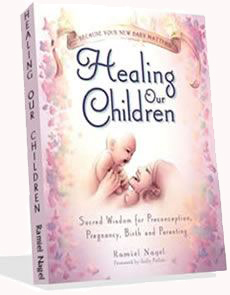Early in human history, diapers were not a common commodity anywhere. Most babies were worn on their mothers’ body throughout the day in a traditional papoose or other baby carrier. Often, these babies would simply relieve themselves in the pack or papoose that they were swaddled within. In warmer climates, many babies were naked or close to it. This permitted them to use the bathroom wherever they were, without leaving their mothers with a mess.
For hundreds of years, parents would simply place their baby over an appropriate place upon receiving unique cues that it was time to go. This practice, known as elimination communication or natural infant hygiene, is still quite common in many parts of the non-western world and is growing in popularity amongst European and American parents. Currently, around half of the world’s infants never wear a diaper and many are potty-trained by their first birthday.
Following Baby’s Cues
When it comes to the practice of elimination communication, it is important for caregivers to pay close attention to their baby’s cues. Ideally elimination communication should be implemented within the first four months of life. Many parents who plan to use the practice begin the day the baby is born. One of the biggest reasons for starting so early is that parents have ample time to pick up on signs that the baby needs to use the potty. All babies give off signs, whether it is a certain noise, expression, or that they go at a certain time of day.
Mothers Intuition
Mothers’ intuition also plays a large role in natural infant hygiene. After a few days of bonding and observing the baby for cues, most mothers are able to predict when the baby needs to go potty. It is the same as a mother who wakes up right before her baby rouses to nurse.
Parental Prompting
Finally, parental prompting plays a role in elimination communication. Parents begin to make a certain noise before placing the baby over the pot, such as “Shhhh” or “Wee”. These noises become a type of language for the baby and with time, the baby begins to associate the noise with using the bathroom.
The Tools of Natural Infant Hygiene
Though the general idea behind natural infant hygiene is that the baby does not require a lot of extra stuff to manage their bladder and bowel movements, there are some items that are helpful for families who practice natural infant hygiene.
Pads
Wool, fleece, and sheepskin pads are very popular amongst families practicing elimination communication. They are placed beneath the baby at night to soak up any accidents. These materials are used because they will wick the moisture away from the baby, keeping baby dry and comfortable throughout the night and protecting the mattress from damage.
Cloth Diapers
Though the whole idea behind natural infant hygiene is to avoid diapers, some families do purchase a few cloth diapers for the early days. Many parents will simply place the diaper under the baby during naps, similar to a pad, during the early days. Sometimes cloth diapers are also placed on babies during time outside of the house.
Cloth diapers are preferred over disposables because they are better for the environment, contain fewer chemicals, and feel natural. Children who are solely cloth diapered tend to start using the potty far sooner than children who wear disposables because they are more aware of the discomfort caused from wetting or having a bowel movement.
Woolies, Longies, and Shorties
Woolies, longies, and shorties are all terms for knit bottoms that babies wear in lieu of diapers. They protect the baby from the elements and keep them warm. In the event that a baby does have an accident in their woolies, the material will soak up the moisture and keep the baby feeling dry. Many parents who practice elimination communication use these as nighttime attire during the winter instead of a pad.
Potties
Though some parents simply place their baby over the family toilet, most will purchase small plastic potties or buckets to catch the baby’s bowel movements. The practice, known as “making a catch” is the primary tenant of elimination communication.
The Benefits and Advantages of Elimination Communication
There are many benefits to practicing natural infant hygiene rather than simply waiting for the baby to show interest in potty learning. Practiced for generations, when properly executed this practice can be very successful and surprisingly hygienic, even more so than using diapers.
- Babies who use elimination communication begin to use the potty independently far earlier than their diapered peers, often shortly after their first birthday.
- There is little to no waste, bowel movements and urine go into the toilet just as if the baby were an adult. There are no pails filled with dirty diapers, no garbage bags sitting with human waste.
- The connection between parent and baby is strong when natural infant hygiene is practice. Bonding is greatly improved.
- Babies never have to deal with the discomfort of diaper rash or sitting in a wet diaper.
References:
http://www.naturalchild.org/guest/ingrid_bauer.html
http://health.howstuffworks.com/pregnancy-and-parenting/baby-health/newborn-development/elimination-communication.htm



















